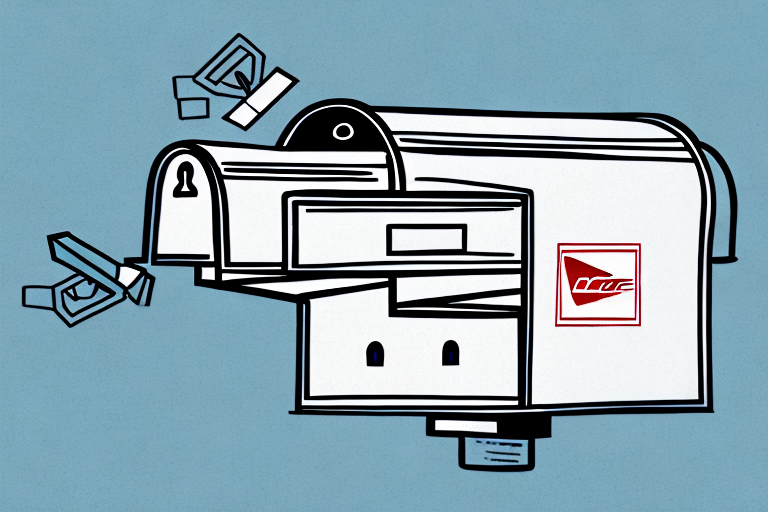How Much Does Postal Insurance Cost? A Comprehensive Guide
Are you tired of shipping your valuable packages without any guarantee of their safe arrival? Protecting your packages during transit is crucial, but it can also be costly. That's where postal insurance comes into play. In this comprehensive guide, we will take a detailed look at the cost of postal insurance and how to calculate it for different shipping options.
Understanding Postal Insurance: Basics and Benefits
Postal insurance provides coverage for packages that are lost, stolen, or damaged during transit. It is an add-on service offered by shipping providers like USPS, FedEx, and UPS. The cost of postal insurance varies depending on the value of the package and the shipping option selected.
One of the benefits of postal insurance is that it provides peace of mind for both the sender and the recipient. In the event that a package is lost or damaged, the insurance coverage can help to offset the cost of replacing the items. Additionally, some shipping providers offer expedited claims processing for insured packages, which can help to resolve any issues more quickly and efficiently.
Key Benefits of Postal Insurance
- Financial protection against loss or damage
- Peace of mind for senders and recipients
- Expedited claims processing
- Coverage for a wide range of shipping scenarios
How Postal Insurance Protects Your Packages During Transit
Postal insurance can protect your packages during transit by providing financial compensation for the loss or damage of your shipment. If your package is lost, stolen, or damaged during transit, postal insurance can reimburse you for the declared value of the item.
It is important to note that not all packages are eligible for postal insurance. Certain items, such as perishable goods or hazardous materials, may not be covered. Additionally, there may be restrictions on the maximum declared value of the item that can be insured.
Eligibility and Coverage Limits
- Eligible items: Electronics, clothing, documents, etc.
- Ineligible items: Perishables, hazardous materials
- Maximum coverage limits vary by provider
When purchasing postal insurance, it is important to carefully read the terms and conditions to ensure that your package is eligible and that you understand the coverage limits. It is also recommended to properly package and label your shipment to minimize the risk of damage or loss during transit.
What Determines the Cost of Postal Insurance?
The cost of postal insurance is primarily based on the value of the item being shipped. The higher the value of the item, the more expensive postal insurance will be. However, there are other factors that can affect the cost of postal insurance, such as the shipping option selected, the destination, and the weight of the package.
Factors Influencing Insurance Costs
- Declared Value: Higher value items incur higher insurance costs.
- Shipping Option: Expedited services typically cost more.
- Destination: International shipments may have higher rates.
- Package Weight: Heavier packages may increase the insurance cost.
It is important to note that some items may not be eligible for postal insurance, such as perishable goods or items that are prohibited from being shipped. Additionally, the level of coverage desired can also impact the cost of postal insurance. For example, if a shipper wants to insure an item for its full value, the cost of insurance will be higher than if they only insure it for a portion of its value.
Factors Affecting Postal Insurance Rates
Postal insurance rates can vary depending on the shipping provider's policies and the factors mentioned above. The shipping provider you choose and the destination of the package can also impact the postal insurance rates. For example, international shipping generally costs more than domestic shipping.
Additional Factors
- Shipping Provider: Different providers have varying rate structures.
- Destination: Rates increase for international destinations.
- Package Value: Higher value requires more expensive insurance.
- Shipping Service: Priority or express services may have higher rates.
Another factor that can affect postal insurance rates is the value of the item being shipped. Higher value items may require additional insurance coverage, which can increase the cost of postal insurance. Additionally, the type of shipping service selected, such as priority or express, can also impact the insurance rates. It is important to carefully consider these factors when selecting a shipping provider and insurance coverage to ensure that your package is adequately protected during transit.
How to Calculate Postal Insurance Costs for Different Shipping Options
Calculating postal insurance costs can be tricky, but it is essential to ensure that your packages are appropriately protected during transit. Most shipping providers have an online calculator that allows you to estimate the cost of postal insurance for different shipping options. It is important to declare the accurate value of your item to receive appropriate coverage.
Steps to Calculate Insurance Costs
- Determine the declared value of your package.
- Select the shipping provider and desired shipping option.
- Use the provider’s online insurance calculator to estimate the cost.
- Review the coverage details and adjust the value if necessary.
It is also important to note that some shipping options may have restrictions on the type of items that can be insured. For example, certain carriers may not offer insurance for fragile or high-value items. It is crucial to research and understand the insurance policies of your chosen shipping provider to ensure that your package is adequately protected. Additionally, it is recommended to package your items securely to minimize the risk of damage during transit.
Comparing USPS, FedEx, and UPS Insurance Rates
Comparing postal insurance rates is essential to ensure that you are getting the best deal for your money. USPS, FedEx, and UPS offer different pricing structures for their postal insurance services. Make sure to compare the rates and policies of each shipping provider to make an informed decision about which one is right for you.
USPS Insurance Rates
- Coverage up to $5,000
- Rates based on $0.45 per $100 of insured value
- Additional coverage options available
FedEx Insurance Rates
- Coverage up to $100,000
- Rates vary based on service type and value
- Comprehensive coverage options for high-value items
UPS Insurance Rates
- Coverage up to $50,000
- Rates based on declared value and service level
- Specialized insurance for valuable shipments
When comparing insurance rates, it's important to consider the level of coverage that each provider offers. USPS, FedEx, and UPS all offer different levels of coverage, with some providers offering more comprehensive coverage than others. Make sure to carefully review the coverage options and limitations of each provider before making a decision.
In addition to insurance rates and coverage, it's also important to consider the reliability and speed of each shipping provider. While USPS may offer lower rates, they may not always be the fastest or most reliable option. On the other hand, FedEx and UPS may offer faster and more reliable shipping, but at a higher cost. Consider your shipping needs and priorities when making a decision about which provider to use.
Tips to Save Money on Postal Insurance without Compromising Protection
If you are shipping items of lower value, you may want to consider cheaper shipping options that offer lower postal insurance rates. You could also consider using a private insurance provider to get a better deal on your postal insurance.
Cost-Saving Strategies
- Choose Appropriate Shipping Options: Select services that balance cost and coverage.
- Use Private Insurance: Explore third-party insurance providers for competitive rates.
- Package Securely: Proper packaging can prevent damage, reducing the need for claims.
- Opt for Higher Deductibles: Lower premiums by accepting a higher deductible.
Another way to save money on postal insurance is to package your items securely. Proper packaging can prevent damage during transit, reducing the likelihood of needing to file a claim. Additionally, you can opt for a higher deductible on your postal insurance policy, which can lower your premium costs. Just be sure to weigh the potential savings against the risk of having to pay a higher deductible in the event of a claim.
When Should You Consider Buying Additional Postal Insurance?
You should consider buying additional postal insurance if you are shipping high-value items. Private insurance providers often offer higher coverage limits than shipping providers, which can protect you in case of loss or damage.
Scenarios for Additional Insurance
- Shipping high-value items such as electronics or jewelry
- International shipments with higher risk
- Sending antiques, artwork, or irreplaceable items
Another situation where you may want to consider buying additional postal insurance is when you are shipping internationally. International shipping can be more unpredictable and there is a higher risk of loss or damage during transit. Additional insurance can provide peace of mind and financial protection.
It is also important to note that some items may not be covered by standard postal insurance. For example, antiques, artwork, and jewelry may require additional coverage due to their high value. If you are unsure whether your item is covered, it is best to check with your shipping provider or insurance company.
How to File a Postal Insurance Claim for Lost or Damaged Packages
If your shipment is lost or damaged during transit, you may need to file a postal insurance claim to receive compensation. Most shipping providers have a claims process that you need to follow to make sure you are reimbursed for your item's value.
Steps to File a Claim
- Gather necessary documentation: tracking number, proof of purchase, photos of damage.
- Fill out the insurance claim form provided by the shipping provider.
- Submit the claim along with all required documentation.
- Track the status of your claim through the provider’s online system.
When filing a postal insurance claim, it's important to have all the necessary documentation and information. This includes the tracking number, proof of purchase or value of the item, and any photos or evidence of damage. It's also important to file the claim as soon as possible, as there may be time limits for filing. Once the claim is submitted, you can track its progress and communicate with the shipping provider if any additional information is needed. By following these steps, you can ensure that you receive the compensation you deserve for any lost or damaged packages.
Common Mistakes to Avoid When Buying Postal Insurance
Make sure to declare the accurate value of your item and understand the shipping provider's policy before purchasing postal insurance. Don't assume that your item is automatically covered or misunderstand the coverage limits of your insurance policy.
Avoid These Pitfalls
- Under-declaring Value: Declare the true value to ensure adequate coverage.
- Assuming Automatic Coverage: Verify insurance is purchased and applied.
- Poor Packaging: Improper packaging can void insurance claims.
- Ignoring Policy Terms: Read and understand all terms and conditions.
By understanding the cost of postal insurance and how it works, you can make informed decisions about protecting your shipments during transit. Whether you are shipping high-value items or valuable documents, postal insurance can give you peace of mind knowing that your packages are protected.
Another common mistake to avoid when buying postal insurance is not properly packaging your items. If your package is not properly secured and protected, it may not be covered by your insurance policy. Make sure to use appropriate packaging materials, such as bubble wrap or packing peanuts, and double-check that your package is securely sealed before shipping.
It's also important to keep in mind that not all items are eligible for postal insurance. Some items, such as perishable goods or hazardous materials, may not be covered by insurance policies. Before purchasing postal insurance, make sure to check with your shipping provider to see if your item is eligible for coverage.
Conclusion
Understanding the costs and benefits of postal insurance is essential for anyone who regularly ships valuable items. By carefully selecting the right insurance options and shipping providers, you can ensure that your packages are protected without breaking the bank. Always declare accurate values, choose appropriate shipping methods, and package your items securely to maximize the effectiveness of your postal insurance.
For more detailed information, refer to the official guidelines provided by your chosen shipping provider:






















